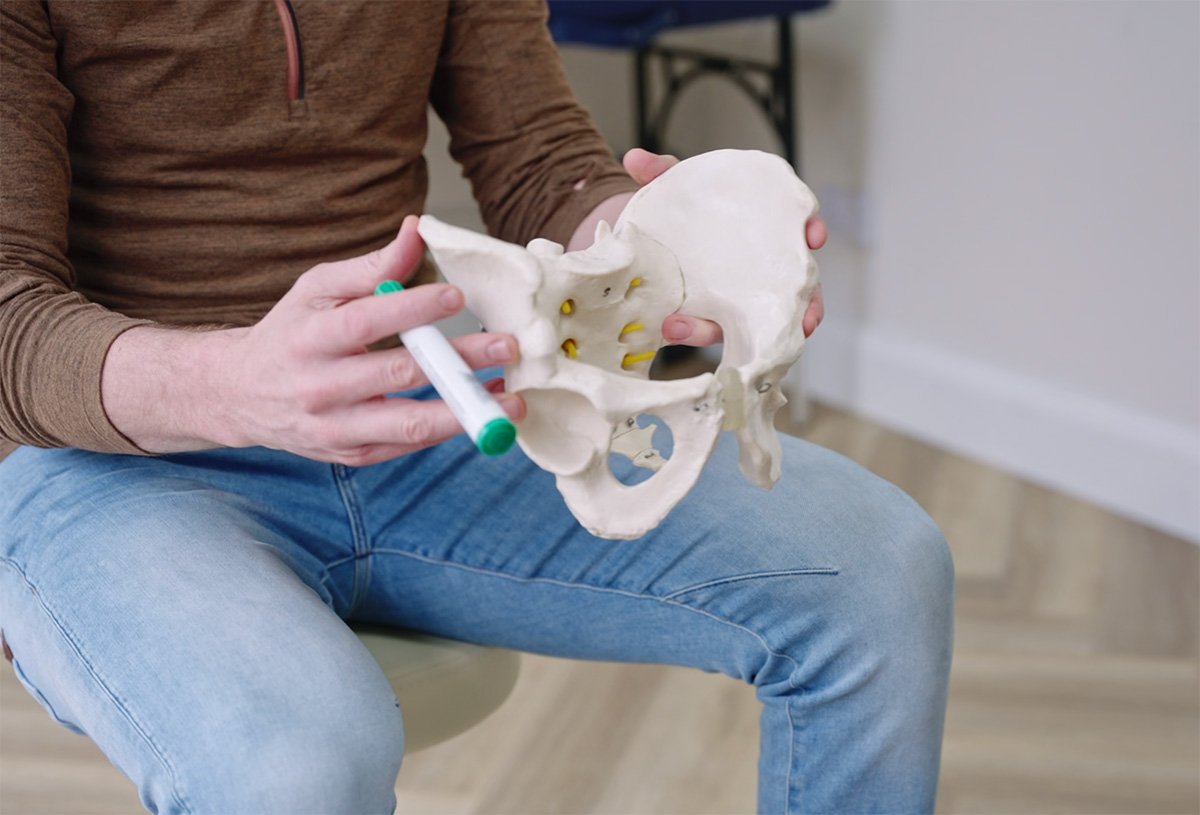
Understanding and Managing Lower Back Pain
Lower back pain (LBP) is one of the most common presentations a physiotherapist will encounter in a private practice setting. Over 80% of people will experience LBP at some point in their life. This can be due to various reasons, such as lifting something too heavy, being in a car accident, a sports injury, or sometimes from something as trivial as picking up a sock from the ground. Identifying the exact structures causing the pain can be challenging, but in my experience, the pelvis often plays a significant role in LBP.
The pelvis is directly connected to the lowest two lumbar vertebrae, L4 and L5. If the pelvis is resting in a more rotated or hiked position, it will pull on these lumbar vertebrae, causing a reaction from the muscles that attach to these bones and joints. This can drive pain and decrease mobility and function. Therefore, assessing the lumbar spine, pelvis, and hips is essential for accurately diagnosing the injury.
The body aims to be centred or in optimal alignment, which is where it functions at its highest level. Although the body is incredibly adaptable and can cope with changes in our posture (alignment), the further we move away from optimal alignment, the more likely we are to encounter issues like pain or reduced function. For example, if someone breaks their foot and must wear a protective boot for six weeks, they will unconsciously protect the injured part of the body by unloading the weight going through it. This new strategy that the body adopts can persist beyond the healing time of the injury. This means that perhaps 55% or 60% of the person’s bodyweight is going through the unaffected leg. This creates more load on one side of the body, which over time can lead to a host of problems. If one side of your lower back is doing more of the work with every step you take or every time you stand up, this will eventually lead to overloading that area, resulting in back pain.
Lower back pain (LBP) is one of the most common presentations a physiotherapist will encounter in a private practice setting.
Written by Physiotherapist - Eoin
Understanding and Managing Lower Back Pain: The Role of the Pelvis
Accurately assessing the resting position of the pelvis, as well as how the pelvis moves during tasks such as walking and squatting, is key to understanding if the pelvis is driving lower back pain.
t is also crucial to identify which muscles are tight and pulling the pelvis in a certain direction. Releasing tight muscles, such as the glutes or the paraspinals, through techniques like trigger point dry needling and massage, can make a significant difference in returning the pelvis to a more optimal position. An individually prescribed home mobility programme is another crucial part of treatment. This programme helps maintain and improve the ability of the pelvis, hips, and spine to move optimally. Once the alignment and movement issues have been addressed, the pain will usually subside within a reasonable timeframe. Strength work can also be introduced around this time.
In addition to these therapeutic approaches, patient education is paramount. Understanding the underlying causes of their pain and the role of the pelvis in LBP can empower patients to take proactive steps in managing their condition. Educating patients on proper body mechanics and posture can prevent further strain on the lower back. For example, teaching patients how to lift objects correctly, avoid prolonged sitting, and incorporate regular breaks to move and stretch during their day can be highly beneficial.
Moreover, it's important to address lifestyle factors that may contribute to lower back pain. Maintaining a healthy weight, engaging in regular physical activity, and ensuring proper ergonomics at work and home can all help reduce the risk of LBP. Encouraging patients to incorporate core-strengthening exercises into their routine can also provide better support for the lower back and pelvis, further preventing pain.
In summary, lower back pain is a prevalent issue that affects a significant portion of the population. While the causes of LBP can be varied and complex, the pelvis often plays a crucial role. By accurately assessing and addressing pelvic alignment and mobility, physiotherapists can effectively manage and alleviate lower back pain. Combining manual therapy techniques, a tailored home mobility programme, patient education, and lifestyle modifications can provide a comprehensive approach to treating and preventing LBP.


